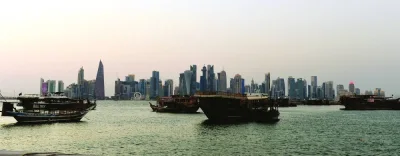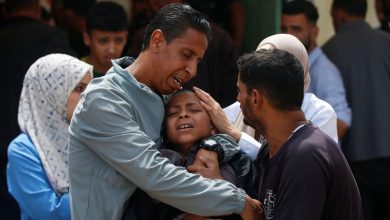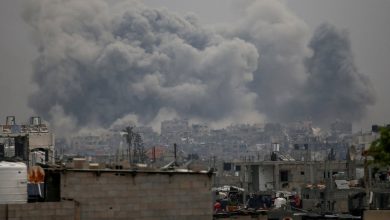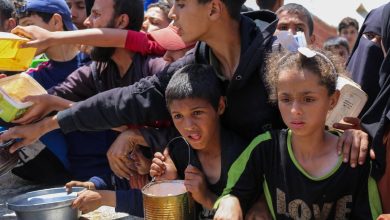Global South
Iraq fails to meet Opec+ oil target even after lowering output
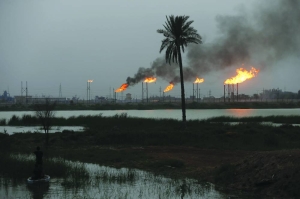
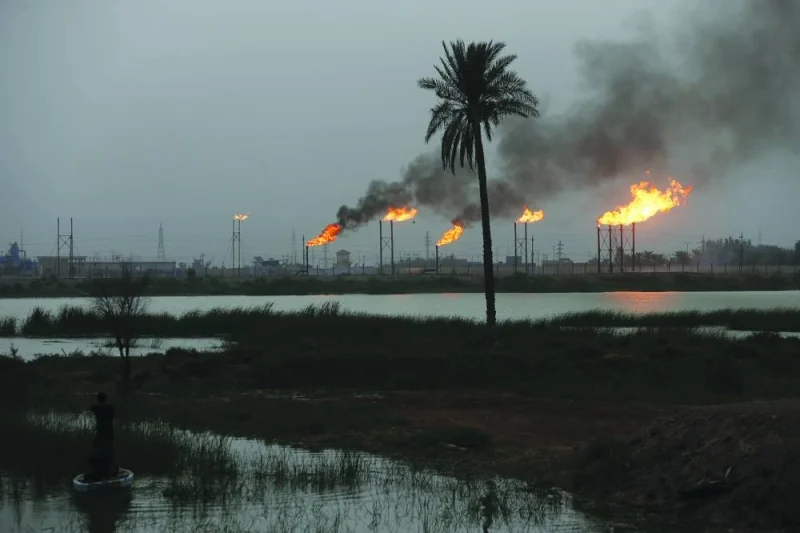
Flames rise from oil refinery pipes in Basra. In an Opec+ committee meeting Wednesday, Iraq again pledged “to achieve full conformity as well as compensate for overproduction,” according to a statement after the talks. It’s expected to submit a detailed plan by the end of April.
Iraq again missed its Opec+ oil production target in March, potentially setting itself up for added scrutiny as the alliance prepares to review the country’s plan for supply.
Opec’s second-biggest producer pumped 4.17mn barrels a day last month, 30,000 barrels a day less than in February, according to a Bloomberg survey.
While that’s Iraq’s lowest output level this year, it’s still about 170,000 barrels more than pledged as the alliance curbs production to prop up the market. Oil Minister Hayyan Abdul Ghani last month said the country would trim both output and exports, after breaching its production quota in January and February.
In an Opec+ committee meeting Wednesday, Iraq again pledged “to achieve full conformity as well as compensate for overproduction,” according to a statement after the talks. It’s expected to submit a detailed plan by the end of April.
Iraqi output has been a matter of debate in recent months. Data from the Organisation of Petroleum Exporting Countries shows the country has exceeded its production target with the group since July. Baghdad — which has a long history of breaking its output pledges — has said it’s committed to voluntary cuts.
Iraq’s crude exports fell by 7% last month to 3.15mn barrels a day, in a sign the country was scaling back its involvement in the international market, according to Bloomberg tanker-tracking. That’s lower than the 3.3mn barrels a day the country aimed to ship.
Exports aren’t an exact indication of production. Countries generally keep some oil at home to refine into fuels and can add crude or remove it from stockpiles. Iraq has expanded domestic refining — boosting fuel-processing capacity to more than 1mn barrels a day — with the aim of weaning itself off fuel imports. Opec and its allies have agreed to keep their current production targets in place until at least the end of June. That puts Iraq’s output target at about 4mn barrels a day.
Along with Iraq, the United Arab Emirates and Gabon are also over their limits, collectively pumping several hundred thousand barrels a day above their agreed quotas.
Nonetheless, the combined effort by Opec and its partners has helped to buoy crude prices, now at the highest levels of the year, near $90 a barrel. The supply cuts — along with surprisingly robust fuel demand in the US and elsewhere — are keeping world markets tight despite more output from the Americas.
Iraq has exceeded its quota even with its second main export route shut. The country hasn’t exported any crude from its northern fields via pipeline to the Mediterranean coast since Turkey halted flows to the port of Ceyhan at the end of March last year.
The impasse — which also involves a disagreement over payments owed to international producers working in the semi-autonomous Kurdish region — shows no signs of being overcome. Nor do the production limits give Iraq incentive to resolve the issue.
Opec’s second-biggest producer pumped 4.17mn barrels a day last month, 30,000 barrels a day less than in February, according to a Bloomberg survey.
While that’s Iraq’s lowest output level this year, it’s still about 170,000 barrels more than pledged as the alliance curbs production to prop up the market. Oil Minister Hayyan Abdul Ghani last month said the country would trim both output and exports, after breaching its production quota in January and February.
In an Opec+ committee meeting Wednesday, Iraq again pledged “to achieve full conformity as well as compensate for overproduction,” according to a statement after the talks. It’s expected to submit a detailed plan by the end of April.
Iraqi output has been a matter of debate in recent months. Data from the Organisation of Petroleum Exporting Countries shows the country has exceeded its production target with the group since July. Baghdad — which has a long history of breaking its output pledges — has said it’s committed to voluntary cuts.
Iraq’s crude exports fell by 7% last month to 3.15mn barrels a day, in a sign the country was scaling back its involvement in the international market, according to Bloomberg tanker-tracking. That’s lower than the 3.3mn barrels a day the country aimed to ship.
Exports aren’t an exact indication of production. Countries generally keep some oil at home to refine into fuels and can add crude or remove it from stockpiles. Iraq has expanded domestic refining — boosting fuel-processing capacity to more than 1mn barrels a day — with the aim of weaning itself off fuel imports. Opec and its allies have agreed to keep their current production targets in place until at least the end of June. That puts Iraq’s output target at about 4mn barrels a day.
Along with Iraq, the United Arab Emirates and Gabon are also over their limits, collectively pumping several hundred thousand barrels a day above their agreed quotas.
Nonetheless, the combined effort by Opec and its partners has helped to buoy crude prices, now at the highest levels of the year, near $90 a barrel. The supply cuts — along with surprisingly robust fuel demand in the US and elsewhere — are keeping world markets tight despite more output from the Americas.
Iraq has exceeded its quota even with its second main export route shut. The country hasn’t exported any crude from its northern fields via pipeline to the Mediterranean coast since Turkey halted flows to the port of Ceyhan at the end of March last year.
The impasse — which also involves a disagreement over payments owed to international producers working in the semi-autonomous Kurdish region — shows no signs of being overcome. Nor do the production limits give Iraq incentive to resolve the issue.


